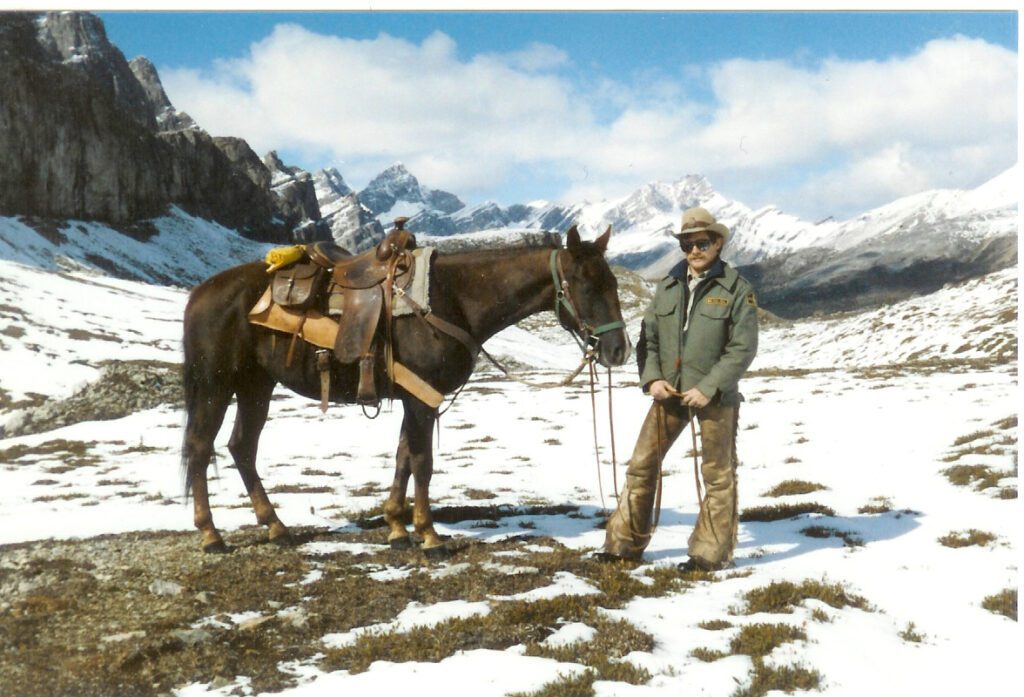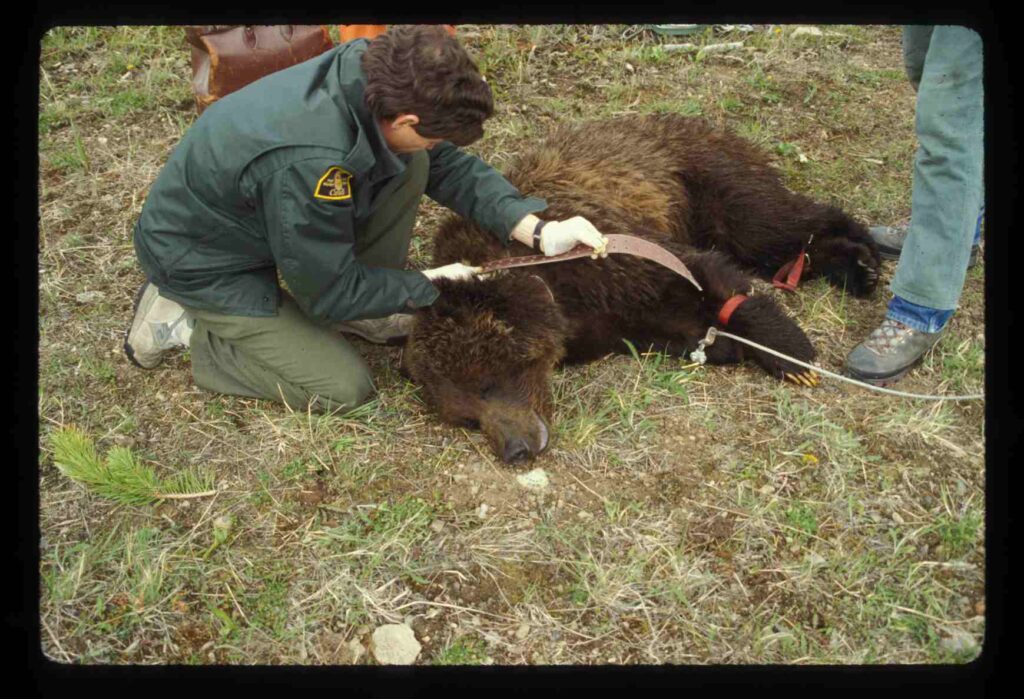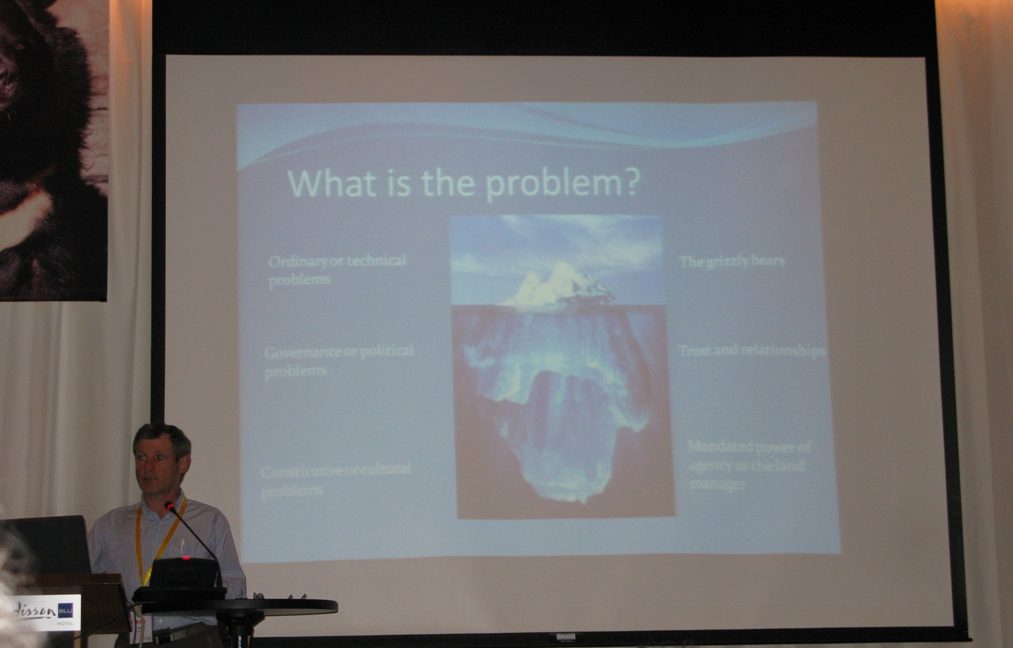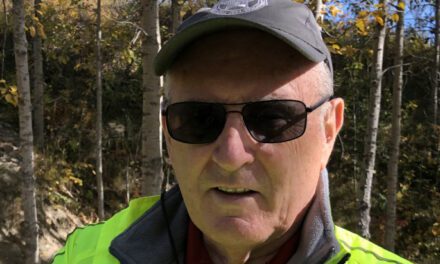Park Warden Alumni Society of Alberta
Oral History Phase 13 Fall 2023
Phone Interview with Mike Gibeau
Date/time: October 15, 2023 @ 1000 Canmore
Interviewed by Monique Hunkeler

South Molar Pass 1985 Banff National Park with Colt named Snip
Place and date of birth?
MG: I was born in 1956 in Calgary because that was the closest hospital, but we lived in Cluny, which is 65 miles East of Calgary, just north of where Treaty 7 was signed.
MH: Where did you grow up?
MG: We had typical mixed farm at Cluny with cattle, grain and hay land. My dad grew up there and actually my mom and dad both had farms close by. Both of my grandparents were homesteaders back in the 1900s. My grandfather on my mom’s side came in 1901 and my dad’s side 1905. They both came from Quebec. So both sides of the family are French. Both took advantage of the homesteading laws and got essentially free land. My grandfather on my mom’s side more a cattle ranch than a farm but on my dad’s side, more a grain farm. So, the roots are all there east of Calgary. And I was there right through high school.
MH: Did you speak French in the family?
MG: No, our generation lost it. My dad spoke French to my grandfather all the time but he never spoke French to us, so we lost the language in our generation.
MH: How did you become involved in the Warden Service? Which national park did you start working in?
MG: That’s an interesting story, and I’d forgotten about it. After high school, I went to NAIT (Northern Alberta Institute of Technology) to the forestry school, majoring in wildlife management. The first year I was there, I was 19, I saw a poster for Seasonal Park Wardens and I knew exactly what that job was going to be. Because about three years earlier, I was 16 or 17, I had a summer job working with Mac MacKenzie from Warner and MacKenzie, the guide outfitting business. I was the wrangler for the trail rider camp in the Spray Valley that summer, and I met Earl Skjonsberg and spent one evening with him at the old Spray River Wardens cabin, which was about a mile away from the trail ride camp. I’d been left on my own because the entire group had gone out to get a new group of people to come in and I was just looking after camp. So I hung out with Earl for that day and evening as he was the District Warden there. So I applied that first year in college and got a summer job in 1976.

This was one of the very first wolves radio collared in Banff National Park in 1987. I helicopter darted this alpha female at Backswamp. Terry Skjonsberg assisted.
MH: What different parks did you work in? How did they compare? Do you have a favourite?
MG: Well, my entire career was spent in Banff, but I kind of think of that as being three different parks. I spent time in Banff, I spent time in Lake Louise and I spent time in Saskatchewan crossing and every one of those three places was completely different. I only spent a year at Saskatchewan crossing but certainly a lot of time in Lake Louise and Banff. Some people move around to various parks but as it worked out for me, I never got the opportunity to go anywhere.
MH: What made you want to join the Warden Service?
MG: Well, originally because I’d had that experience with Earl Skjonsberg and the mystique around being a backcountry Warden really captured me as a 16-year-old. That was a no brainer to apply for the job originally and then once I had the original seasonal job, I just kept coming back year after year.
MH: What were some of your main responsibilities over the years?
MG: Well, it’s probably easiest just to go through my history. I was definitely not your conventional warden, but had a very nontraditional career compared to most wardens. And I think that probably takes a little explaining. I started out, originally like most other Wardens. I got a summer job as a backcountry Warden and I spent the first half dozen years or so doing nothing but riding around in the backcountry with my horses. I had gotten hired because I was a kid that knew how to ride a horse and stay alive in the woods. So, every summer I kept getting assigned back in various backcountry districts. I got a permanent job offer in 1982 in Lake Louise and did most of the traditional stuff that wardens do; the fire warden for a while, I did wildlife management stuff, I did avalanche control in the winter. And then I think about 1985 or 1986, there was a black bear study that was starting. I was assigned to that black bear study to be the Warden to help capture black bears and be the safety guy because I knew how to shoot a gun and I was interested in wildlife stuff. Those three years of working on the black bear study kind of set me up for more wildlife work. I really was interested in doing more wildlife work so when the opportunity came along, I helped start the wolf research work with Paul Paquet. But then, by the late 1980s, it became pretty clear that if I wanted to stay doing wildlife research, I had to upgrade myself. I kept getting assigned to do other things, but I really wanted to do more wildlife work. So, I decided that I needed to go back to school, but at the time not many people had done that. Eventually in 1990 I was given the opportunity, and I left the Warden Service per se and went to University of Montana to pursue a master’s degree in wildlife biology. That decision really changed the course of my career because I really focused on doing wildlife research. I did the original coyote study in Banff as part of my master’s degree which you probably remember as a dispatcher. I was back and forth between Missoula and Banff for three years doing both course work and field studies.
I came back from the master’s degree in 1994. That was a period in the Warden Service where ecosystem management and ecological integrity was a big deal and Parks was all about doing more science. It just so happened that that was exactly what I wanted to do and so my career path actually fit kind of right in to where Parks Canada was going at that point in time. Grizzly bears were a big deal in the early 1990s. One of the first jobs I had when I came back to the Warden Service in 1994 was to apply an analysis that had originally been done in the United States about the health of the grizzly bear population, and apply it to Banff, Yoho and Kootenay National Parks. It was called a habitat effectiveness model. That work was a bit of a bombshell because it demonstrated that grizzly bears in Banff, Yoho and Kootenay were in trouble. So, all of a sudden there was a movement afoot to do grizzly bear research in Banff. I just happen to be the guy that had just finished some grizzly bear analysis and I had already had some experience doing wolf and black bear work. I had a master’s degree, and it was suggested I should do the grizzly bear work as a Ph.D. I had never, ever intended, after finishing my master’s degree to go back to school, but all of a sudden, right in front of me was the opportunity to do a Ph.D. So, Cindy and I discussed and debated about it, because I knew how much work it was going to be compared to just doing a regular seven-and-a-half-hour day as a warden. We decided I might as well, as the opportunity was there. There was a lot of consternation in the Warden Services about me doing my Ph.D. because I was yet again being plucked out of what would have been the normal wardens job and was given what appeared to some, as preferential treatment. So, in the decade between 1990 and 2000, I spent nine years in school, which is very untraditional for a Warden. The Ph.D. I did was through the University of Calgary with Steve Herrero. He was the director of the East Slopes Grizzly Bear Project, and I was the principal researcher. You probably remember there was all this to do about grizzly bears for years and years and years, and at the end of it all, in 2000, I came back to the Warden Service with a Ph.D. A position eventually got created for me, called the Grizzly Bear Specialist. That was new for the Warden Service because there hadn’t been any “specialists” up until that time. The Warden Service was generally people that do a lot of different things, and here was one guy who was doing only one thing, a very narrow job description, nothing but grizzly bear research, not even the management side, just the research. That set me apart from most of the other people in the Warden Service because I was in such a specialized job.

Capture of male grizzly bear #14 in 1994. In ten years of research we captured and radio collared 87 individuals’ grizzly bears. The process was hard on people and even harder on bears.
Between 2000 to 2005, I continued doing that Grizzly Bear Research Project that ultimately ended up running for 10 years. It encompassed all of the Bow River watershed and included all of Kananaskis Country and much of Banff, but we essentially went wherever the bears went. We kept about 25 individuals radio collared each year and followed them around. That research project in itself, was a lifetime’s worth of work. It was the longest running Grizzly Bear Research Project in Canada at the time. Probably over a dozen people worked almost full time on the project. Along the way, of course, researchers were expected to not only collect data and analyze statistics, but there was an emphasis on writing research papers and getting them published in scientific journals. So, over the years, there’s dozens and dozens of research papers that I published, a lot of them with other collaborators, some from here, some from other places. That body of work was very much outside of the Warden Service and had a more international focus. One of the most memorable papers I published was titled ‘Of Bears, Chess and Checkers’ published in 2012 in a journal called Wildlife Professional. https://nrccooperative.org/wp-content/uploads/2016/01/Gibeau_M_Of-Bears-Chess-and-Checkers.pdf The upshot of the paper was as wildlife biologists we are playing checkers while the rest of the world is playing the more sophisticated game of chess.
Along the way I ended up presenting papers and being invited to speak at various conferences and workshops. As my work became better known I ended up traveling all over the world. Of course, it was because of the species I was studying mostly. If I had been studying ducks it would have been completely different. But because I was studying grizzly bears there was a lot of interest in our work. Because there aren’t very many grizzly bear researchers around, by the end of my career I was completely burnt out of going to conferences and presenting research papers.

Presentation to the International Bear Association Conference in Japan in 2006



